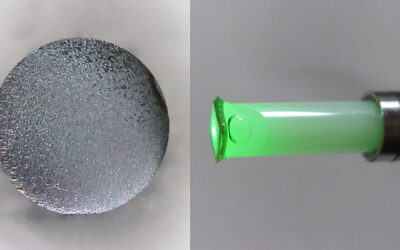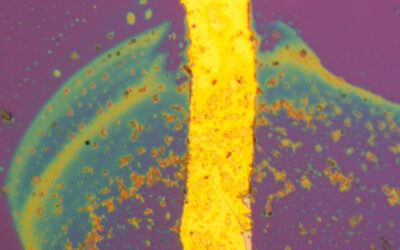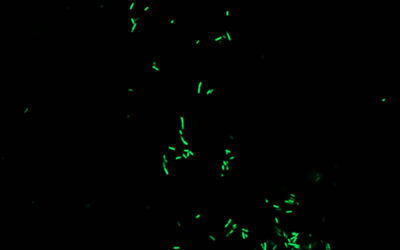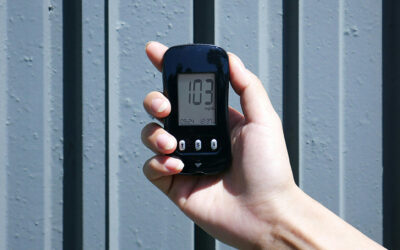Light plays an important role in our lives. The use of artificial light has been revolutionized by the light bulb and more recently by small, energy-saving light-emitting diodes (LEDs). Think of the possibilities of a 3D-printable, flexible light source that can be easily integrated into a wide range of devices.
In their recent paper in Advanced Materials, Hong Meng from Peking University Shenzhen Graduate School; Ray H. Baughman from the University of Texas at Dallas; Wei Huang from Northwestern Polytechnical University and Nanjing Tech University, China; and their co-workers demonstrate a new geometry for electroluminescent devices. Instead of relying on transparent electrodes, a polar liquid or solid is used to emit light. In contrast to a conventional sandwich electroluminescent light source (ELS), they designed a novel, co-planar electrode structure.
The electrode-bridged ELS consists of two separate silver-electrode layers separated from the ZnS phosphor by a BaTiO3 dielectric. Large-area flexible devices produce light locally, provided that the electrodes are effectively bridged by a polar solvent like water. The researchers attribute the occurring luminescence to a dramatically increased electric field in the phosphor layer, caused by the polarized bridging molecules. Tight electrode spacing results in tight light-source spacing, and stable bridging is achieved by a wide range of polar solvents—and even by strokes of a graphite pencil.
Two ELS cells connected to a power supply and immersed in separate beakers of deionized water only produce light after being bridged by a slab of polyacrylamide hydrogel. Interdigitated circular electrodes are also accessible via the printable phosphor, resulting in attractive light-source shapes that can be directly printed on umbrella fabric and act as direct sensors for rain and ice, which produce lower luminescence. The panels can light up on touch or can display elaborate paintings generated from water and coleseed oil.
Recently, the researchers have also successfully applied the new co-planar electrode device structure in both organic light-emitting diodes and polymer light-emitting diodes.
To learn more about this highly versatile electroluminescent device, please visit the Advanced Materials homepage.

















